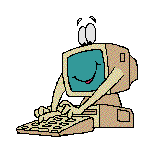CLASSROOM LANGUAGE
Classroom language is very important for teaching English. By classroom language, we mean the language you use to communicate with your pupils in the classroom.
Classroom language is not always verbal. Non-verbal communication helps pupils to associate actions with spoken language and can help you minimize the use of Arabic. Teacher signals are also useful as a classroom management strategy. Gestures, facial expressions, and tone of voice are all part of classroom language. Arabic can sometimes be used to explain the procedure for a complicated activity and to check understanding of an abstract vocabulary item. Following are some other common classroom language expressions you might want to use regularly.
Useful classroom language ,terms and expressions
Beginning the lesson
· Hi, children! boys! girls!
· Hello!
· Good morning !afternoon (class).
· How are you today?
Instructions
· Stand up.
· Sit down.
· Get into pairs.
· Get into a group or groups.
· Open your books to page...
· Turn to page...
· Close your books.
· Come to the front.
· Listen to the tape.
· Turn to your desk partners.
Disciplinary Expressions
· Work quietly I keep quiet.
· Think.
· Pay attention.
· Stop.
· Be kind.
· Put away (the book).
Introducing a new stage in the lesson
· Let’s move to...
· Let’s sing.
· Let’s play.
· Let’s draw.
· Let’s write.
· It’s time to...
Ending the lesson
• I want you to ... at home.
• We will stop here.
• See you tomorrow.
• Goodbye.
Praising and giving feedback
• Good/very good/excellent/well done.
• You are good pupils.
• Clap for him/her/yourselves.
• Wonderful!
• Do your best.
Getting pupils’ attention
• Listen!
• Lookatme!
• Stop talking now.
• Be quiet!
• Give me Two.
Taking attendance
• Is Mona here?
• Mahmoud?
• Yes, miss.
• Yes, sir.
• Who is absent today?
Classroom language is not always verbal. Non-verbal communication helps pupils to associate actions with spoken language and can help you minimize the use of Arabic. Teacher signals are also useful as a classroom management strategy. Gestures, facial expressions, and tone of voice are all part of classroom language. Arabic can sometimes be used to explain the procedure for a complicated activity and to check understanding of an abstract vocabulary item. Following are some other common classroom language expressions you might want to use regularly.
Useful classroom language ,terms and expressions
Beginning the lesson
· Hi, children! boys! girls!
· Hello!
· Good morning !afternoon (class).
· How are you today?
Instructions
· Stand up.
· Sit down.
· Get into pairs.
· Get into a group or groups.
· Open your books to page...
· Turn to page...
· Close your books.
· Come to the front.
· Listen to the tape.
· Turn to your desk partners.
Disciplinary Expressions
· Work quietly I keep quiet.
· Think.
· Pay attention.
· Stop.
· Be kind.
· Put away (the book).
Introducing a new stage in the lesson
· Let’s move to...
· Let’s sing.
· Let’s play.
· Let’s draw.
· Let’s write.
· It’s time to...
Ending the lesson
• I want you to ... at home.
• We will stop here.
• See you tomorrow.
• Goodbye.
Praising and giving feedback
• Good/very good/excellent/well done.
• You are good pupils.
• Clap for him/her/yourselves.
• Wonderful!
• Do your best.
Getting pupils’ attention
• Listen!
• Lookatme!
• Stop talking now.
• Be quiet!
• Give me Two.
Taking attendance
• Is Mona here?
• Mahmoud?
• Yes, miss.
• Yes, sir.
• Who is absent today?


.jpg)
تعليقات
إرسال تعليق